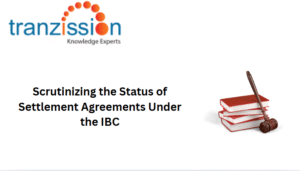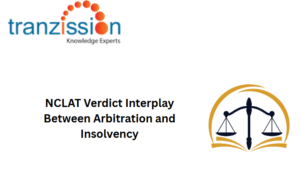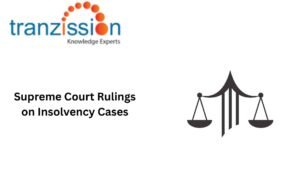
Understanding Section 22 of RERA

Table of Contents
Section 22 of RERA mandates that the RERA Authority’s Chairperson and Members be appointed based on specific professional qualifications and expertise. Its purpose is to ensure that individuals leading RERA have strong legal, financial, and regulatory knowledge to protect consumer rights and manage real estate disputes effectively. The Chairperson and other Members of the Authority shall be appointed by the appropriate Government on the recommendations of a Selection Committee consisting of the Chief Justice of the High Court or his nominee, the Secretary of the Department dealing with Housing and the Law Secretary, from amongst persons having adequate knowledge of and professional experience of at least 20 years in case of the Chairperson and 15 years in the case of the Members in urban development, housing, real estate development, infrastructure, economics, technical experts from relevant fields, planning, law, commerce, accountancy, industry, management, social service, public affairs or administration
Role of RERA Chairperson & Members in Real Estate Insolvency Cases
In real estate insolvency cases, RERA Chairperson and Members play a crucial role as sectoral regulators, providing inputs to the Committee of Creditors (CoC) and ensuring transparency:
Overseeing Insolvency-Related Real Estate Disputes:
RERA authorities play a key role in resolving disputes when a real estate developer faces insolvency. Insolvency professionals (IPs) handling the corporate insolvency resolution process (CIRP) for distressed real estate projects must coordinate with RERA for approvals and compliance.
Safeguarding Homebuyers’ Rights During CIRP and Liquidation:
Under Section 22 of RERA, homebuyers are considered financial creditors, which impacts their rights in insolvency proceedings. Hence, RERA officials must ensure that stalled projects get resolved efficiently under IBC without violating homebuyers’ interests.
Approving Resolution Plans & Liquidation Strategies for Real Estate Projects:
Section 22 of RERA leadership assesses compliance with resolution plans in distressed projects and IPs must ensure that all RERA regulations are met before submitting plans for the CoC.
Legal Intersection Between RERA & IBC for Insolvency Professionals
Understanding the Conflict Between RERA & IBC:
The Supreme Court has clarified that while Section 22 of RERA protects homebuyers, IBC prevails in insolvency cases. IPs must balance both laws when managing distressed real estate projects.
Role of RERA in Approving Stressed Asset Transfers:
Despite the primacy of the IBC through section 238, any resolution plan involving a distressed real estate company must get Section 22 of RERA clearance before execution.
Read more : Section 104 – Preparation of List of Creditors
Coordination Between RERA Authorities & Insolvency Professionals:
The professionals and regularities have a major role in preventing conflict due to the overlap of the IBC and the RERA. IPs should proactively engage with RERA regulators to avoid delays in insolvency proceedings.
Challenges for Insolvency Professionals in Managing RERA-Linked Insolvencies
Delays in Project Resolution Due to RERA Approvals:
Many insolvency cases involving real estate companies face delays due to RERA compliance hurdles. IPs can overcome this hindrance by establishing clear communication channels with RERA authorities early in the process.
Conflicts Between RERA Regulations & CoC Decisions:
The CoC members may prioritize monetary recovery, while RERA prioritizes project completion. The IBBI needs to introduce a balanced approach that aligns with CoC objectives and RERA mandates, thus reducing conflicts.
Managing Homebuyer Claims & Disputes:
As financial creditors, homebuyers often challenge resolution plans that do not prioritize project completion, making it difficult to complete the resolution process.
Case Studies – How RERA & IBC Have Interacted in Real Estate Insolvency Cases
The Jaypee Infratech case highlights the complex interplay between the IBC and the RERA, particularly concerning the rights of homebuyers and the obligations of developers in insolvency proceedings. The NCLT approved Suraksha Group’s bid and the resolution plan, with a direction to deliver units to homebuyers as per the timeline in the plan, which the NCLAT also upheld. The Amrapali Group insolvency case under the IBC involved the Supreme Court canceling the group’s RERA registration and directing NBCC to complete projects. This case highlighted the IBC’s role in resolving distressed real estate projects and recognizing homebuyers as financial creditors.
Best Practices for Insolvency Professionals in RERA-Regulated Cases
To ensure compliance with both the IBC and RERA, IPs should familiarize themselves with both legislations to avoid regulatory conflicts.
It is necessary to proactively engage with Authorities under the RERA can help prevent unnecessary delays in project approvals.
IPs and the CoC need to implement resolution plans that align with the mandatory provisions under the RERA. Therefore, it is necessary to prioritize project completion over liquidation to ensure homebuyers’ interests are protected.
The Future of RERA & Its Role in Real Estate Insolvency Cases
One of the major problems of real estate insolvency cases is the conflict between the IBC and the RERA. To strengthen the collaboration, the Insolvency and Bankruptcy Board of India (IBBI) needs to establish more structured frameworks for handling real estate insolvencies. In addition to this, technology-driven solutions can streamline project approvals and homebuyer grievance redressals.
Conclusion : Section 22 of RERA
RERA aims to regulate the real estate sector, involving predicting homebuyers and ensuring transparency and accountability in real estate transactions. Section 22 of RERA deals with the qualifications of the Chairperson and Members of the Real Estate Regulatory Authority, not the insolvency process itself, which falls under the IBC. The real estate sector can be subject to insolvency proceedings under the IBC if a developer faces financial difficulties or defaults on obligations. Thus, RERA’s regulatory oversight impacts insolvency professionals handling distressed real estate cases, who have to handle insolvency cases in which both the IBC and the RERA apply.





